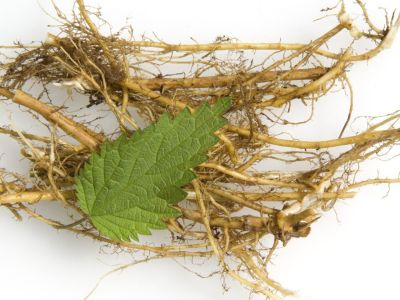Uses for Stinging Nettle Root
If you have ever been hiking in North America near streams, lakes, and other areas with rich soil you might have encountered stinging nettle and it isn’t a meeting you are likely to forget. However, this plant is one of the most tasty forage plants available, in spite of its sting. Young shoots and leaves are delicious edibles, and tea from the dried foliage is a traditional medicinal as well as plant fertilizer. There are also many uses for stinging nettle root that rely upon historical health knowledge. First, you need to get a hold of the root without causing yourself considerable distress. Nettle root is available at many natural food and holistic medicine stores. It comes as a tincture, capsule, tablet, or even a tea. You can easily make your own tea by drying the leaves and steeping them in water to harness the flavor and healthful benefits. The root is said to assist sufferers of enlarged prostate by reducing the urge to urinate. In addition to this use, stinging nettle may also assist with muscle and joint pain abatement and to help with urinary tract infection symptoms. Modern medicine is studying the plant’s use as an arthritis treatment to reduce inflammation, but the primary parts utilized are the leaves. Native Americans used root decoctions for dysentery, to reduce bleeding, and to relieve asthma, bronchitis, or other respiratory ailments. It was also applied externally to soothe hemorrhoids and other swollen skin tissues.
How to Harvest Stinging Nettle Roots
If you are trying to harness the benefits of stinging nettle root, you are going to have to dig a bit. In most cases, gloves are a good idea, as some contact with the leaves is likely to occur. Casual contact with any above ground part of the plant can cause a dermatological incident that is painful and persistent. Be cautious when harvesting nettle root, as the process will kill this valuable plant. Make sure there are plenty of other specimens nearby and you are not reducing the population significantly. You can remove the leaves before digging up the roots, save them and use them in a stir fry or dry them for tea. Stems are bitter and fibrous unless the shoots are very young. Dig outside the foliage area and under the plant at least a foot (31 cm.) to get the roots without damaging them. Once you have your roots, thoroughly clean them in fresh water. Change the water several times and use a vegetable brush to help remove all the grime. Chop the roots into small pieces. The smaller the size, the better you can harness all the juices and benefits from the roots. To make medicine, place the roots in a Mason jar and cover with pure grain alcohol at a rate of 1 part root to 2 parts alcohol. Cover the container and store it in a cool, dark location. Shake the jar daily. In approximately eight weeks, the medicine of the roots will have leached out into the alcohol. Alternatively, you can blanch and mash the roots before storing in the alcohol, but some of the benefits will be lost in the process. Drying the root pieces and making them into tea is another method of harnessing the healing powers of stinging nettle. As with any medicine, consult with a professional healer to determine amounts to ingest and the perfect ratio. Disclaimer: The content of this article is for educational and gardening purposes only. Before using ANY herb or plant for medicinal purposes, please consult a physician or a medical herbalist for advice.
